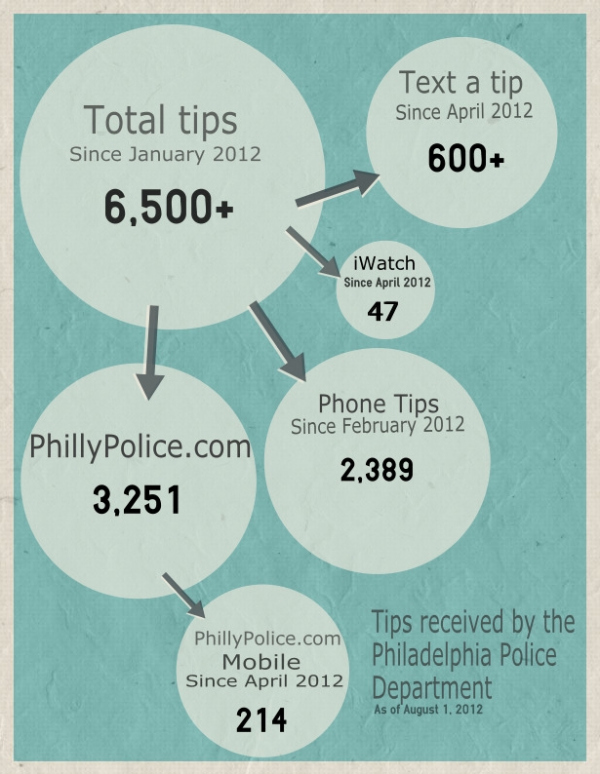The Pinterest page of criminal suspects in Pottstown, PA
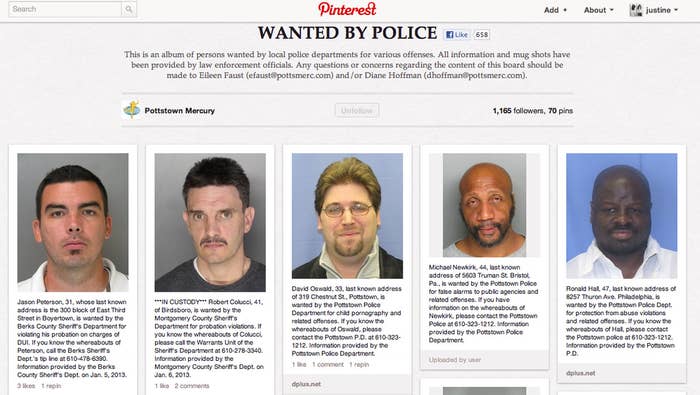
Police Departments from San Francisco to Pottstown, Penn. have begun using the image-sharing platform Pinterest to track down criminals, using it as a sort of digital replacement for the Post Office wall.
Departments making forays into social media began dabbling in the service, whose largely female audience has made it best known, perhaps, for wedding planning, as one of a range of tools aimed primarily at public relations and at generalized community outreach. But the service's image-centric interface has turned it into a tool for solving serious crimes as well.
Cops' experimentation with Pinterest appears, like the service itself, to have grown up outside of the elite cities and high-profile departments like New York and Los Angeles. The Pinterest policing pioneers are lower-profile cities in the middle of the country, places like Kansas City, Mo.—whose police department appears to have been the first on Pinterest—and Pottstown, Penn (pop. 22,377), thirty miles outside Philadelphia.
A glance at Pottstown's page, hosted by a local newspaper, The Mercury shows the intense engagement, with comments ranging from "holyshit! I think this was my babysitter from when I was younger" to very specific addresses and times and dates of their last sightings.
Pottstown Police Captain F. Richard Drumheller told NPR that the Pinterest page led to a 57 percent increase in arrests.
And larger departments have taken note. Philadelphia Police Department Corporal Frank Domizio said his agency—which has been among the leaders in using Facebook and other social platforms to seek crime reports—had moved to Pinterest after hearing of Pottstown's success.
“It’s a marketing thing,” said Domizio, who runs the department's social media channels. "People are doing this to sell shampoo, so my question is, 'How do I use it to arrest people?'”
Kansas City, Missouri’s police department was the first to build a Pinterest page. Sarah Boyd, a spokesperson for the department, heard from her old college friend, who helps run social media at the Pentagon, that the army had a Pinterest page. “I figured, if the US Army is doing it, so can we,” explains Boyd. She couldn’t find any other police departments with a page, but knowing Pinterest's growing popularity, she started one up.
Pinterest isn't the KCPD's first foray into leveraging social media: It's been using Facebook as a fan page since October 2010 and Twitter as a breaking news feed since 2009. Pinterest, says Boyd, is an “amalgam of everything—a repository of all different kinds of photographs.”
“The success is not just in solving specific crimes,” says Boyd. “It makes them trust us more, which makes them more likely to cooperate we us.” In other words, it’s classic community outreach.
Their page, which currently has 684 followers, has a number of boards:
"Identifying Street Drugs & Paraphernalia"
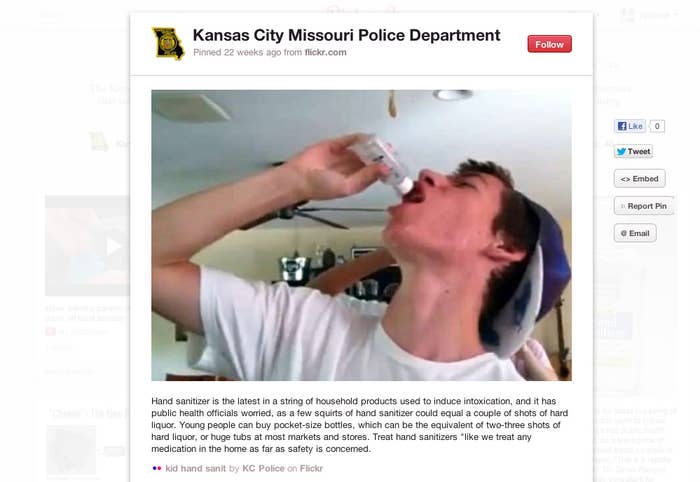
“Cool Police Equipment”
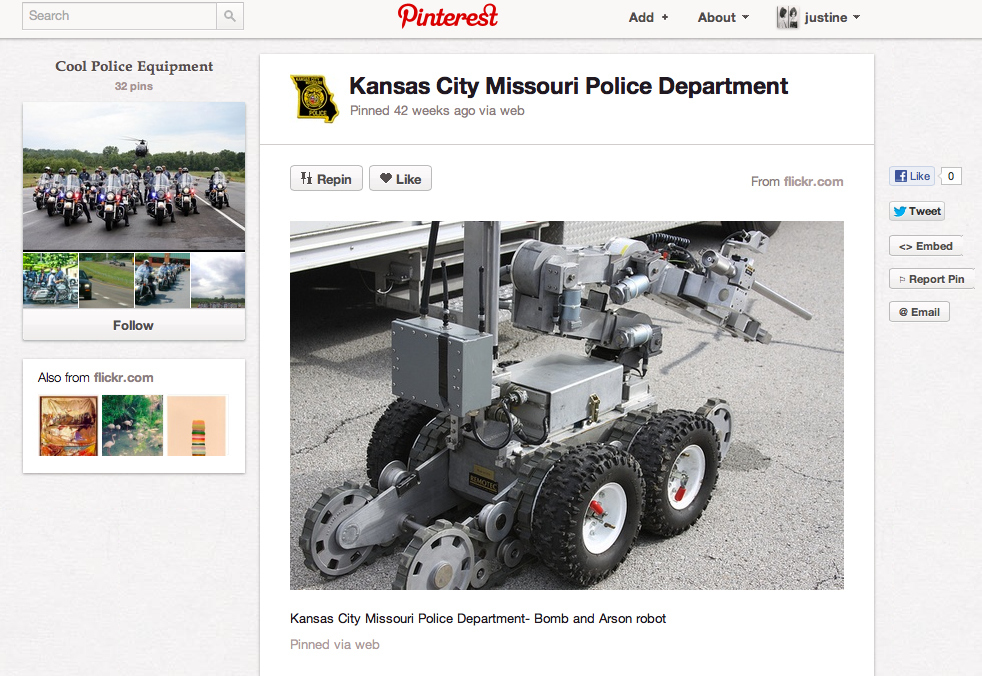
"Police Treats"
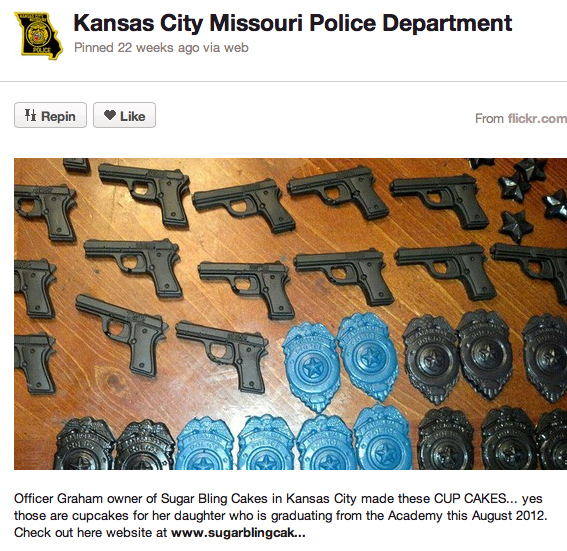
"2012 Unsolved Homicides"
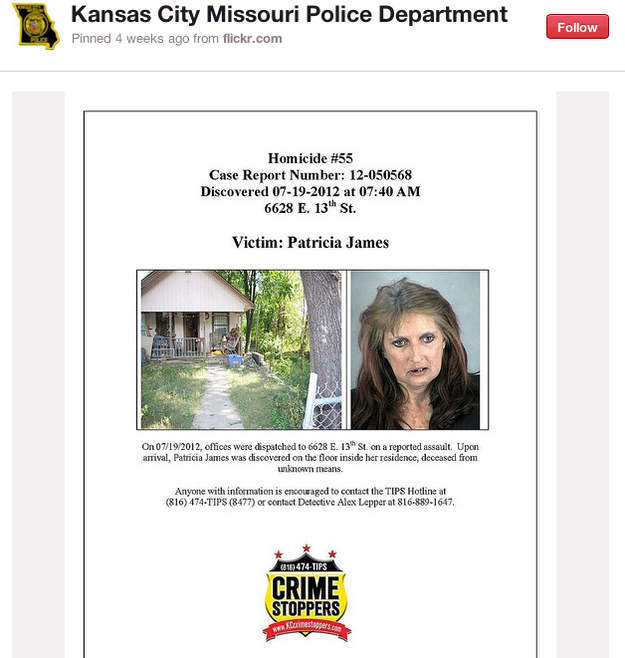
And of course, a monkey video.
View this video on YouTube
The trend is spreading. There are now at least fourteen cities using Pinterest, the majority of whom pin photos of suspects and crime prevention tools, as well as “Cops are just like us!” items. San Francisco, for example, is currently “looking into Pinterest as a viable tool” according to spokesperson Carlos Manfredi, to complement their already existing Facebook page, Twitter feed, YouTube channel, and weekly Vimeo video show, "The Line Up” which posts a weekly video a week of a suspects committing a crime.
The Philadelphia Police Department's page, which has 275 followers, mainly features stills from captured surveillance videos of unknown suspects:
The Philadelphia Police Department's Pinterest page
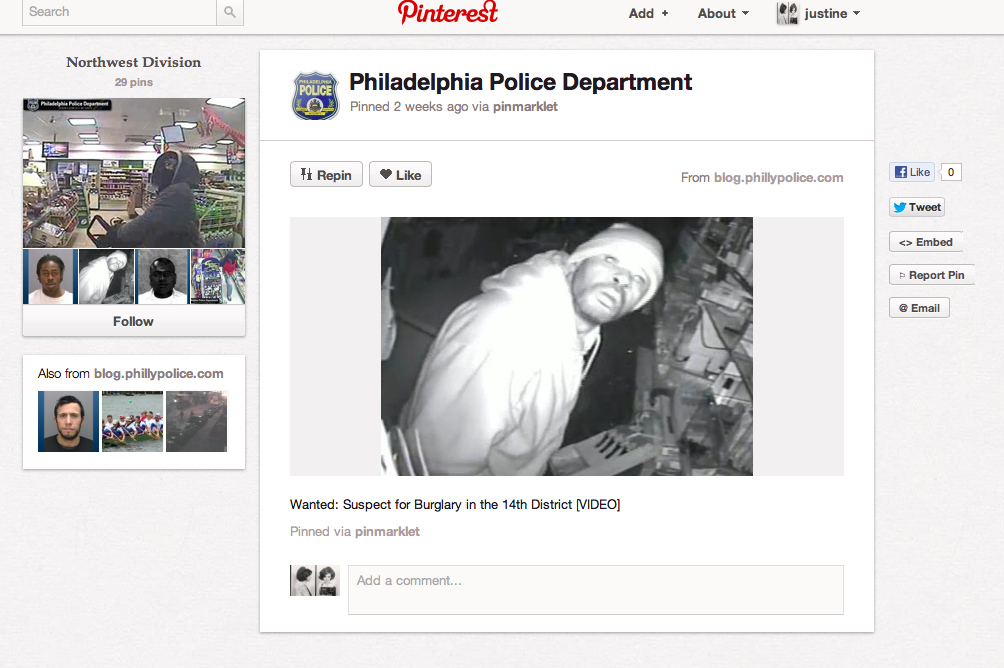
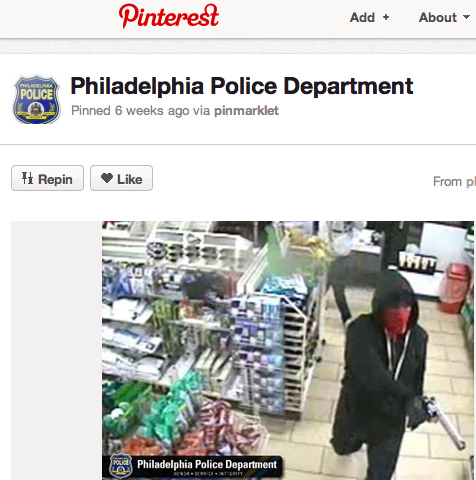
Central to the social media push is lowering the bar to reporting crime in environments where everything from apathy to fear of being labeled a snitch may deter witnesses.
“Picking up the phone or coming into the police station is a substantial step,” says Philadelphia's Domizio. “With social, we are hitting up people where they are already there, floating through recipes.”
The experiments so far are small, and data is relatively scarce. The Philadelphia Police Department says that between January and August 2012, it received over 6,500 tips from social media posts. It's currently crunching numbers to see what the increase in tips has been since launching their Pinterest page last November. But since they cross-post their photos and videos across multiple platforms, it will be difficult to tell the specific impact of Pinterest. While KCPD doesn’t track where people are seeing photos that lead to tips, Boyd says they have received multiple inquiries and tips about items seen on the Pinterest board and their other social media sites.
Where tips to the Philly police come from
